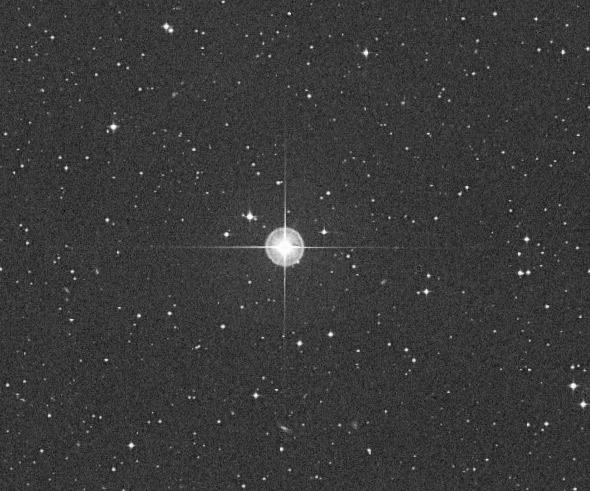Astronomers have found the oldest star in the Universe. Well, kinda. It’s the oldest one we know of. At least the oldest one we know of for which an age has been reliably measured.
OK, enough caveats. What’s going on?
Some stars are young; we see them being born now. Some are middle-aged, like the Sun, which is about 4.56 billion years old. It’ll be good to go for another 6 billion years or more (though more on that in a moment).
And some are old. Very old. Up until now, the oldest star that has had a reliable age measured for it is about 13.2 billion years old. It was already old when the Sun was just starting to fuse hydrogen into helium.
But astronomers have just published a paper about a star that is even more elderly: HD 140283, which appears to be 14.3 billion years old.
Now, before you start quoting that number for the next edition of the Guinness Book of Cosmic Records, you might want to note that the Universe itself is only 13.82 billion years old. Clearly, something must be off here.
The answer is that the age of the star is off. That takes a moment to explain.
When the Universe was young, just a few hundred million years old, it was a bit simpler. The main stuff floating around was hydrogen and helium. There weren’t a lot of other elements yet because there hadn’t been enough stars to make them! Elements heavier than helium* were created in the first stars, and then scattered into the cosmos when those stars exploded. These elements were then seeded into clouds of gas, which formed the next generation of stars.
Astronomers call all elements heavier than helium “metals,” which is dumb, but that’s what we’re stuck with. And as a rule of thumb, the older a star is, the fewer metals it has in it. We can measure the amount of such materials in a star by taking high-resolution spectra of it. Surveys have identified lots of stars with low metallicity, and three such stars were specifically targeted for the research, including HD 140283.
The advantages of looking at this star are many. For one, it’s near the Sun (less than 200 light years away), so the distance can be determined very accurately using parallax. Its location in the sky was clear of galactic dust, which can interfere with observations. And for another, it’s finally—finally—nearing the end of its life.
That’s important. A star like the Sun spends most of its time fusing hydrogen into helium in its core. But eventually that hydrogen fuel runs out. The core starts to shrink under its own gravity and heats up. That sends its temperature through the roof (so to speak), and it heats up the layers of the star above it. That causes them to expand, and so the star begins to get bigger. Eventually it becomes a red giant, but for a while, as it expands, it’s called a subgiant. This won’t happen with the Sun for several billion more years, but with HD 140283 it’s just starting to happen now. That’s convenient timing; we have excellent physical models for how stars behave when they turn into a subgiant, and that depends on their temperature, their brightness, and their age. Very careful analysis of the star has yielded the age measurement, and that’s how they got that it’s 14.3 billion years old.
But there are a number of difficulties with getting the age this way—it depends on factors like (oddly) how much oxygen is in the star, how much dust is between us and it, and other things. In the end, they calculate their error bars as about ±0.8 billion years.
What that means is that their formal calculation gives the age as 14.3 billion years, but 13.5 billion is just as likely the right number. It’s possible it’s younger than that, but not as likely.
Any scientist looking at that would then be perfectly happy concluding that the star is younger than the Universe. I am. And I’ll note that the previous record holder, called He 1523-0901, had an uncertainty that was a bit bigger than for HD 140283. All things considered, it’s reasonable to conclude HD 140283 is somewhat older.
So is it the oldest star in the Universe? That seems unlikely. It’s a big, big Universe, and the odds of the actual oldest star being a) in our galaxy at all and 2) that close to the Sun are essentially zero. Most likely we’ll find older stars the more we look. But since this isn’t an exact science what we’re likely to find is not a single oldest star, but a bunch of stars that are all about the same age to within uncertainty. And they’ll all be just a few hundred million years younger than the Universe itself.
And that’s pretty cool. The goal here isn’t to break the record, it’s to collect data for lots of stars so that we can understand what things were like back when the Universe was a wee baby, and how stars have changed in all the eons since.
When you step back and think about that for a moment, I hope the hair on the back of your neck stands up. Using astronomy and physics, we can understand the very nature of the Universe itself, from the moment it came to be, through all its adventures since, and then predict what it will be like in the vast, deep future.
Science! I love this stuff.
*Some lithium was also around, but in very tiny quantities, and it’s also easily destroyed inside of stars. So for the purposes of this discussion it doesn’t really count.
Tip o’ the dew shield to my friend Bond, Howard Bond, who is one of the authors on that paper.
